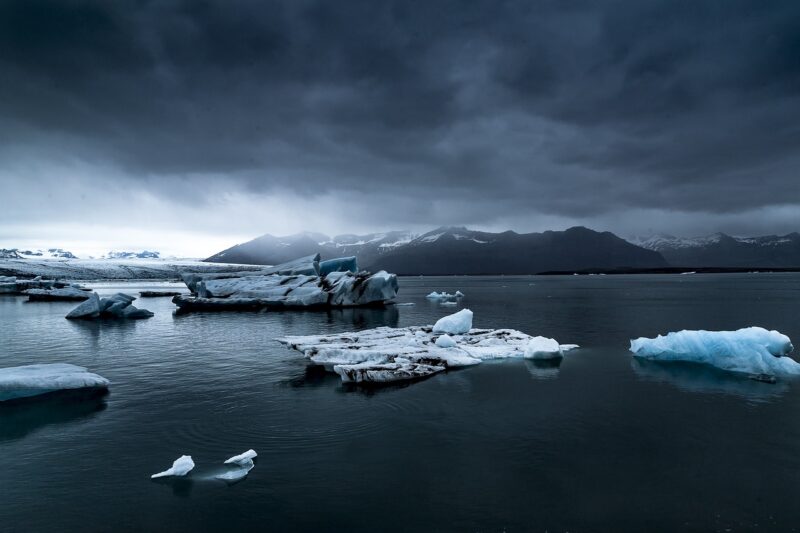The Science of Glaciers and How They Feed Our Rivers
November 14, 2024

Glaciers are vast bodies of ice that form from accumulated snow and ice, compacted over years into dense ice masses. They hold the key to our planet’s freshwater supply, affecting ecosystems, climates, and human societies. This article explores the intricate relationship between glaciers and river systems, shedding light on their formation, behavior, and the profound impact they have on our environment, particularly in providing water to rivers.
1. What are Glaciers?
Glaciers are more than just frozen water; they are dynamic systems that shape landscapes, influence climate, and provide a habitat for diverse ecosystems. When conditions are right—typically in regions with consistent cold temperatures and sufficient snowfall—glaciers form in areas where the accumulation of snow exceeds its melting over an extended period.
Types of Glaciers:
– Alpine Glaciers: These glaciers form in mountainous regions, flowing down valleys. They are often formed from the accumulation of snow at high altitudes.
– Continental Glaciers: Also known as ice sheets, these are massive expanses of ice that cover large areas of land, like those found in Greenland and Antarctica. They can reach thicknesses of several kilometers and cover millions of square kilometers.
Glaciers carve ‘U’-shaped valleys, deposit sediments, and can create breathtaking landscapes marked by fjords and moraines.
2. The Formation and Movement of Glaciers
Glacial formation begins with snowfall, which compresses into firn, a granular ice. Over time, increased pressure transforms firn into glacial ice. This process is called densification. Glaciers are constantly on the move, albeit very slowly, as gravity pulls them downhill.
Glacial Movement Mechanisms:
– Internal Flow: The ice deforms under stress, allowing it to flow like a viscous fluid. The bottom layer of the glacier, which is subject to melting due to pressure and temperature, can flow more easily than the solid ice above.
– Basal Sliding: As temperatures rise, some glaciers begin to melt at their base, creating a lubricating layer of water that allows the glacier to slide more easily over the bedrock.
These movements contribute to the erosion and reshaping of the landscape beneath and around them.
3. Glaciers as Freshwater Reservoirs
Glaciers serve as the largest reservoirs of freshwater on Earth, storing roughly 69% of the planet’s freshwater. Their melting during warmer seasons plays a crucial role in feeding major rivers and supplying water for billions of people.
The Role of Glaciers in the Hydrological Cycle:
– Seasonal Melt: During warm months, glaciers begin to melt; the meltwater is directed into rivers. This process is essential, particularly in areas where rivers depend heavily on glacial melt for their flow.
– Sustaining River Systems: For example, the Himalayan glaciers feed major rivers like the Ganges and Brahmaputra, vital for agriculture, drinking water, and energy generation for millions.
The contributions from glaciers to river systems are particularly valuable in regions where rainfall is scarce or unreliable.
4. The Impact of Climate Change on Glaciers
Unfortunately, glaciers are highly sensitive to climate change, and the increase in global temperatures has put many of them at risk. Glacial retreat and melting are alarming indicators of climate change.
Consequences of Glacial Melting:
– Water Supply Issues: As glaciers recede, the initial increase in meltwater may lead to higher river flows. However, this will not last; once glaciers significantly shrink, rivers may experience reduced water flow, impacting ecosystems and human use.
– Sea Level Rise: As glaciers melt, they contribute to rising sea levels, posing threats to coastal communities and ecosystems.
– Increased Natural Disasters: Retreating glaciers can lead to glacial lake outburst floods (GLOFs), which are sudden floods that occur when the dam holding a glacial lake fails. This poses risks to communities living downstream.
Each of these consequences demonstrates how intimately tied our water supply and climate are to the fate of the world’s glaciers.
5. The Importance of Glaciers for Ecosystems
Glaciers play an essential role in maintaining biodiversity and the health of ecosystems. They provide habitat for unique species specifically adapted to cold environments, including ice worms and various mosses and lichens. Moreover, as glaciers melt, they contribute nutrients to rivers, influencing aquatic ecosystems.
Impact on Aquatic Life:
– The meltwater from glaciers is typically rich in minerals, aiding in nutrient cycling in river systems and contributing to robust food webs.
– Many fish species rely on glacial meltwater to regulate river temperatures, especially during summer months.
Ecosystems, both terrestrial and aquatic, are deeply interlinked with the health and stability of glaciers.
Conclusion
Understanding the science of glaciers and their relationship with rivers is vital for addressing both environmental challenges and the needs of human populations. As glaciers continue to retreat due to climate change, it is imperative that we monitor their impacts on global freshwater supplies and river systems.
Efforts to mitigate climate change and preserve glacial environments will be fundamental in maintaining the balance of our planet’s ecosystems and securing water resources for future generations. By promoting awareness of this crucial topic, we can foster a greater appreciation for our planet’s natural wonders and the interconnectedness of our environment.







